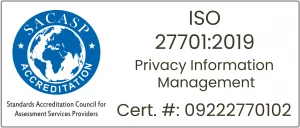© 2025 Macro Global. All Rights Reserved.
Traverse the article
Despite years of guidance from the FSCS SCV Guide and the reporting solutions like SCV Alliance, in recent audits across multiple institutions, it has been proven that the SCV and Exclusions View files remain a recurring point of regulatory escalation. Many firms continue to struggle with the same technical and governance gaps.
Errors in SCV or Exclusions View impact payout eligibility, accuracy of depositor protection, and audit credibility. Regulators treat repeated issues such as misclassified SCV exclusions, inconsistent account status codes, and unresolved FFSTP/NFFSTP errors as evidence of weak data governance rather than isolated IT faults.
This blog focuses on the top recurring pitfalls observed in recent file submissions, exception testing, and SCV Alliance reviews. Each pitfall is drawn from real-world compliance findings, showing where institutions stumble, why those errors persist, and how they can be corrected with stronger validation, reconciliations, and operational discipline. This blog benefits compliance, operations, and audit teams seeking practical guidance on reducing exceptions, enhancing data integrity, and ensuring regulator-ready SCV submissions.
Pitfall 1: Misclassified SCV Exclusions
Audit reviews consistently flag cases where HMTS, LEGDIS, LEGDOR, or BEN codes are applied incorrectly or used interchangeably with dormant or disputed balances. The FSCS SCV Guide mandates that eligibility must follow the priority decision tree, yet many firms bypass this, applying blanket exclusion logic that causes payout delays and regulatory scrutiny.
Audit Insight:
- Dormant accounts were often tagged as LEGDOR without meeting legal dormancy (no customer-initiated activity for 15 years under the UK Dormant Bank & Building Society Accounts regime). LEGDIS was misapplied to accounts under operational disputes, which should remain in the SCV file with correct status coding.
- BEN records were excluded due to incomplete KYC, though the Guide specifies that beneficiaries remain in scope unless legally barred.
Fix:
Implement periodic validation of exclusion logic against actual account and legal status:
- Decision-tree assertions: For example, if the code is LEGDIS, a supporting legal hold reference must exist; if LEGDOR, the account must meet statutory dormancy criteria.
- Sample-based assertion testing: For instance, if the exclusion code is LEGDOR, the account status must be Dormant, and the last activity date must show ≥15 years with no customer-initiated activity (legal dormancy) before LEGDOR is applied.
- Embedded validation: Integrate these checks directly into the SCV Alliance engine or upstream staging layer to ensure errors are caught before final file generation.
- Accounts must not appear in both files. The same customer can appear in both for different accounts, but if a customer is sanctioned, all their accounts go to Exclusions.
Regulatory note: If multiple Exclusion Types apply, select a single classification in this priority: HMTS → LEGDIS → LEGDOR → BEN.
SCV Alliance Edge: SCV Alliance enforces decision-tree logic at scale, automatically running cross-field assertions on exclusion codes and account/legal attributes. The engine flags misclassifications in real time, linking them to source system data for traceability.
By embedding these validations upstream, firms eliminate overlaps between true exclusions and misclassified accounts, reduce payout delays, and maintain regulator-ready SCV files with a robust, auditable evidence trail.
Pitfall 2: Inconsistent Account Status Codes
Financial institutions often operate multiple legacy platforms like core banking, loan servicing, and card systems, each generating its own interpretation of status markers such as closed, suspended, frozen, or inactive.
When these disjoint internal codes feed into the SCV process without harmonisation, the final file ends up with conflicting account statuses.
Audit Insight:
- Regulators have flagged accounts appearing with contradictory statuses across systems (e.g., frozen in one platform but closed in another).
- Manual mapping of legacy status codes often drifts over time, misaligning with FSCS definitions.
- These inconsistencies trigger FFSTP/NFFSTP errors and undermine confidence in the institution’s control framework.
Fix:
Implement a centralised dictionary of account status codes aligned with the SCV Alliance schema:
- Eliminate conflicting mappings across all legacy systems.
- Enforce FSCS-compliant status definitions in every SCV and Exclusions View file.
- Embed automated validation rules to reject unmapped or ambiguous codes before submission.
Regulatory note: Declare your Account Status Codes (FFSTP/NFFSTP and any reason keys) in the SCV Effectiveness Report with plain-English descriptions. FSCS explicitly expects these codes to be listed and explained, and it’s fine to include worked examples.
SCV Alliance Edge: The SCV Alliance engine maintains a single, regulatory-aligned status dictionary across all data ingestion layers. Every incoming status from legacy systems is automatically normalised and validated before reaching the SCV file. This ensures consistent, auditable account statuses, reduces exceptions, and strengthens governance.
By moving from fragmented translation tables to a centralised engine, firms streamline operational reporting, mitigate compliance risk, and enhance audit readiness.
Pitfall 3: FFSTP / NFFSTP File Errors
Even when firms understand inclusion and exclusion logic, submissions often fail at the basic technical level, including file formatting errors, header mismatches, field-level inconsistencies, or delimiter issues.
Audit Insight:
- A high proportion of SCV files are returned with FFSTP errors, forcing resubmission.
- Common triggers include incorrect headers or missing mandatory fields, misaligned delimiters, and inconsistent date or currency formats across systems.
- NFFSTP rejections are particularly problematic as they occur during live cycles, exposing institutions to regulatory escalation.
Fix:
Embed automated pre-validation routines before any file leaves the institution for FSCS submissions (SCV Web Portal or SFTP):
- Schema validation against the SCV Guide, covering headers, mandatory fields, and field lengths.
- Field-level assertions (e.g., if eligibility = Y, then account balance must be > 0).
- Mutual exclusivity: If a customer is NFFSTP for any customer-level reason (e.g., gone-away, probate pending), all their accounts must be NFFSTP and the key listed in the SCV Effectiveness Report. For joint accounts, different holders may have different codes where circumstances differ.
- Delimiter testing for null fields to ensure consistent parsing.
- Version control to ensure alignment with the current FSCS SCV and Exclusions View file structure and headers in each cycle.
SCV Alliance Edge: SCV Alliance provides a pre-submission validation engine that mirrors regulator checks, automatically detecting FFSTP/NFFSTP errors at the field and file level. Intelligent exception routing ensures issues are flagged and resolved in-stream, preventing rework and ensuring submissions are audit-ready.
By embedding these validations, firms reduce operational friction, mitigate regulatory risk, and achieve seamless audit compliance.
Pitfall 4: Data Fragmentation Across Systems
Financial institutions often hold deposit records across multiple core banking platforms, legacy product processors, and ancillary systems.
When these feeds are combined without robust reconciliation, the outcome is predictable: missing balances, duplicate entries, and inconsistent aggregation in the SCV file.
Audit Insight:
- Audit trail reviews have uncovered duplicate account records, where the same customer appeared multiple times due to different source system IDs.
- Balances were either underreported (missing feeds) or overstated (duplicate reconciliation failures).
- Fragmented data lineage made it difficult to demonstrate how final SCV balances were derived, triggering regulatory queries on governance controls.
Fix:
The sustainable solution is to implement a dedicated reconciliation layer or master data hub that consolidates and validates all records before feeding them into SCV.
Key steps include:
- Complete reconciliation of all source system deposits mapped to a single customer identifier.
- Consistent duplicate detection using rules that match on name, date of birth, address, and product ID.
- Transparent data lineage, enabling a clear demonstration of balance derivation from source systems to final SCV submission.
Regulatory note: Ineligible deposits must appear in neither the SCV nor the Exclusions View. Exclusions View is only for eligible accounts that can’t be paid straight away (e.g., LEGDIS/LEGDOR/HMTS/BEN). Don’t route ineligible products here.
SCV Alliance Edge: SCV Alliance enables a real-time reconciliation dashboard that continuously monitors incoming feeds for gaps or inconsistencies. Unlike static pre-submission checks, the platform tracks reconciliation metrics over time, highlighting patterns such as recurring feed failures or mismatched identifiers. This allows operational teams to prioritize systemic issues and refine upstream processes, not just correct individual exceptions, creating a proactive and controlled data pipeline.
By embedding reconciliation in this way, institutions transition from reactive audit firefighting to a transparent, auditable, and continuously improving SCV process.
Pitfall 5: Incomplete Beneficiary Information
A recurring theme in Exclusions View audits is the high volume of exceptions linked to BEN accounts. The root cause is almost always missing or invalid KYC data for dependents or secondary holders. While the primary account holder may pass eligibility checks, incomplete records for beneficiaries often push these accounts into the Exclusions View, driving up exception rates and delaying payout readiness.
Audit Insight:
- In several submissions, beneficiary records lacked critical identifiers such as DOB, address, or verified ID numbers, leading to systemic BEN exclusions across product lines.
- Legacy accounts often carried incomplete or outdated KYC, creating a backlog of unverifiable dependents with no remediation owner or timeline
- Mismatches between trustee/settlor details and named beneficiaries (or missing linkage keys) broke eligibility tracing during file review.
- Edge case: Where beneficiaries aren’t visible (e.g., trust with undisclosed beneficiaries, probate or court restriction, data withheld pending evidence), the Compensatable Amount in the Exclusions file may be blank or 0.00. Record a clear rationale (reason code + narrative), any legal/case reference, the remediation owner, and a target date for visibility.
Fix:
To reduce beneficiary-driven exclusions, firms should focus on tightening both onboarding and remediation processes:
- Onboarding Controls: Ensure that all beneficiary information is treated as mandatory KYC at the point of account creation, aligned to FSCS Guide expectations. Capture and verify identifiers (name, DOB, address, ID), sanctions/PEP screens, and documentary evidence for trustees/guardians.
- Periodic Remediation: Conduct rolling reviews of legacy BEN records to fill gaps, such as missing ID or address updates. Prioritise by risk (e.g., incomplete ID + active balance). Assign owners, due dates, and escalate aged items.
- Assertion testing (pre-submission): Embed rules in the SCV workflow:
- If Exclusion Code = BEN, then either beneficiary identifiers are complete or compensable is blank/0.00 with a populated reason code, case/legal reference, owner, and target date—otherwise block file creation.
- Prohibit dual presence: BEN-flagged accounts must not appear in the SCV file.
- Entity resolution: Reconcile static (names/DOB/address) and dynamic (balances/ownership) data so beneficiaries resolve to a single party across systems; quarantine duplicates before file build.
- Governance & evidence: Produce a BEN exceptions register for each cycle (counts, ageing, reason codes, owners, trend). Reference this in the SCV Effectiveness Report and maintain audit-ready lineage back to source systems.
SCV Alliance provides real-time exception dashboards and remediation triggers focused on beneficiary data. By identifying incomplete BEN records early, operational teams can take proactive action, reducing the reliance on blanket exclusions and improving overall file quality. Its audit-ready tracking ensures institutions can demonstrate the remediation process and compliance with regulators.
Firms that strengthen beneficiary onboarding and actively remediate legacy BEN records not only reduce audit exceptions but also enhance depositor protection readiness in line with FSCS mandates.
Pitfall 6: Static vs. Dynamic Data Errors
Static attributes such as name, date of birth, and address often live in different systems from dynamic attributes like balances, product ownership, or transactional status. When these datasets aren’t synchronised, you get account duplication, broken aggregation, and payout inconsistencies.
Audit Insight:
- In multiple reviews, regulators identified customers with two records in the SCV file—one linked to a static profile and another linked to active balance data.
- Dynamic product ownership was captured correctly but tied to an outdated address or DOB in the static file, undermining customer traceability.
- Such mismatches were flagged as governance failures; the expectation is a single, accurate view of depositor data across attributes.
Fix:
Cross-field reconciliation of static and dynamic datasets:
- Canonical party master: Create a single person/entity master with a unique party_id. Every account, balance, and ownership row must reference a valid party_id (no orphans).
- Snapshot alignment: Lock both static and dynamic extracts to the same SCV as-of timestamp (document time zone). If static data updates after the snapshot, rebuild or block the file.
- Deterministic → probabilistic matching:
- Primary: join on stable keys (customer number; national ID where lawful and appropriate).
- Fallback: fuzzy match (name + DOB + postcode) with documented thresholds and a clerical review queue.
- Duplicate & aggregation guards:
- Assert one party_id → many accounts, never the reverse.
- Compare total balances by party_id vs by account; investigate any variance.
- Ban duplicate (party_id, account_id)
- Referential integrity checks: No dynamic balance or ownership record may reference an end-dated or missing static profile. Flag and quarantine before file build.
- Change-data capture sanity: Track changes to static fields (e.g., address) and verify dynamic ownership still resolves to the same party; open a dedupe case if not.
- Address hygiene: Standardise and validate addresses (e.g., PAF/UDPRN) before matching to cut false duplicates; retain the raw and normalised forms for audit.
- Role mapping clarity: Ensure roles (holder, joint holder, trustee, beneficiary) map cleanly to the canonical party master to support correct aggregation.
- Pre-submission quick checks:
- No account appears under two different party_id
- Every active balance has a current static profile.
- Duplicate/merge queue exists, has owners/SLAs, and is trending down.
SCV Alliance Edge: Alliance enforces referential integrity, duplicate detection, snapshot alignment, and lineage at ingest—so static/dynamic drift is caught and resolved upstream, not at audit.
Pitfall 7: Weak Exception Management Workflows
Too often, exclusions remain unresolved until the point of audit or regulatory review, creating a backlog that undermines data integrity and delays compliance.
Audit Insight:
- Regulators have consistently flagged institutions with material or rising Exclusion View backlogs, treating it as a systemic control weakness rather than an isolated operational issue.
- Exceptions such as unresolved BEN, LEGDIS, or LEGDOR cases were carried forward cycle after cycle without remediation, raising questions on governance maturity.
- In several audits, exception logs existed but lacked ownership or SLA tracking, making them ineffective for pre-submission clearance.
Fix:
Institutions should adopt proactive exception management, anchored on:
- Exception dashboards that surface unresolved cases in real time.
- SLA-driven clearance mechanisms where ownership and turnaround times for exceptions are explicitly defined.
- Automated alerts when exception backlogs grow materially or trend upward, ensuring no surprises during FSCS testing and reviews.
SCV Alliance Edge: SCV Alliance embeds real-time exception dashboards directly into its reporting framework, backed by 175+ AI-powered audit validations that detect issues early. Exception queues are linked to SLA-based ownership and continuous remediation workflows, while audit-ready history and smart comparisons allow firms to demonstrate progress across cycles.
By shifting from reactive clearance to continuous governance, firms reduce exception rates materially over time, show a visible downward trend, and strengthen their audit posture.
Pre-Submission Checklist:
Before finalising SCV files for submission, ensure that:
- All exclusions have been validated against decision tree logic.
- Exception queues are cleared, with no unresolved BEN/LEGDIS/LEGDOR cases.
- SLA adherence reports are documented and auditable.
- Pre-submission validation shows exception backlog is owned, trending down, and cleared to policy.
- No account appears in both SCV and Exclusions; sanction classifications are applied to all accounts of sanctioned customers.
Conclusion
SCV and Exclusions View failures are not IT glitches but governance weaknesses with systemic risks. Misclassified exclusions, fragmented data, status code inconsistencies, and unresolved exceptions all undermine regulatory confidence in an institution’s ability to deliver an accurate, timely depositor protection file when it matters most.
The path forward is about embedding automation, proactive audit practices, and cross-functional remediation at the heart of the SCV process. By refining these processes, firms can shrink error rates, reduce exception queues, and demonstrate a governance framework that withstands regulatory scrutiny.
With SCV Alliance from Macro Global, institutions gain more than file generation capability, as they gain a robust compliance control framework. Features such as automated pre-validation, exception dashboards, reconciliation hubs, and SLA-driven workflows ensure every submission is technically sound and governance-ready, fully aligned with the FSCS SCV guide.
SCV Alliance empowers you to strengthen depositor protection, moving from firefighting exceptions to delivering clean, regulator-ready SCV files on day one.
Transform your FSCS SCV reporting today with our all-in-one Enterprise Solution Suite! Reach us to know more!
Related Posts
29 September 2025 FSCS Single Customer ViewRegulatory Technology
FSCS 2025 Compensation Limit Updates: Execution Strategies for Financial Institutions
From Dec 2025, FSCS protection rises to £110k and THB to £1.4m. Discover how CROs and CTOs can ensure depositor protection, SCV readiness, and auditability.
18 September 2025 FSCS Single Customer ViewRegulatory Technology
FSCS Updates 2025: What Depositor Protection Changes and Compensation Limit Increases Mean for SCV Reporting
Are you ready for FSCS 2025? Understand the new limits, THB complexities, and SCV reporting demands and how SCV Alliance v25 keeps you ahead.
5 September 2025 FSCS Single Customer ViewRegulatory Technology
Data Quality Control for FSCS SCV Compliance: A Playbook for CIOs, CTOs, CCOs & CROs
Be FSCS SCV drill ready. Guide for CIOs, CTOs, CCOs & CROs to embed data quality control, lineage and automation for regulatory reporting & compliance.














